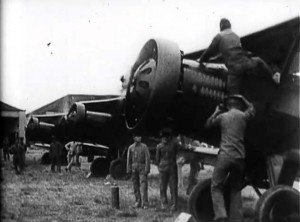 The long Chinese Civil War began in April of 1927 and was a conflict in China between the Chinese Communists and Chinese Nationalists. The force that was loyal to the Chinese government was called the Kuomintang (KMT), and they fought with the Communist Party of China (CPC). The war ended in 1950 and resulted in the establishment of the People’s Republic of China in mainland China and the Republic of China in Taiwan. At that time, both sides claimed to be China’s legitimate governing power.
The long Chinese Civil War began in April of 1927 and was a conflict in China between the Chinese Communists and Chinese Nationalists. The force that was loyal to the Chinese government was called the Kuomintang (KMT), and they fought with the Communist Party of China (CPC). The war ended in 1950 and resulted in the establishment of the People’s Republic of China in mainland China and the Republic of China in Taiwan. At that time, both sides claimed to be China’s legitimate governing power.
This war was an ideological separation between the KMT and CPC. The Chinese Civil War carried on sporadically until late part of the 1937. Then, these two parties came together to form the Second United Front in order to battle the Japanese invasion. In 1946, the civil war started again just one year after the fighting with Japan had ended. Fighting finally ended four years later when the People’s Republic of China (PRC) was founded to control mainland China. The Republic of China (ROC) ended up controlling Taiwan, Quemoy, Penghu, Matsu, and many other outlying islands.
Northern Expedition
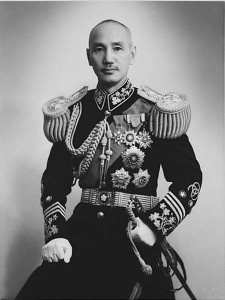 One of the first military campaigns was the Northern Expedition and this was fought from 1926 to 1928. The objective of this campaign was to end the rule of the area’s local warlords by defeating them so they could unify China. During this time, Chiang Kai-shek became the KMT’s leader, and he is credited for winning the war’s first round. As a result of this conflict ending in 1928, the Beiyang government collapsed. This led to the Northeast Flag Replacement, also known as the Chinese reunification. It is important to note that the achievements of the Northern Expedition were mostly due to the CPC and KMT working together militarily.
One of the first military campaigns was the Northern Expedition and this was fought from 1926 to 1928. The objective of this campaign was to end the rule of the area’s local warlords by defeating them so they could unify China. During this time, Chiang Kai-shek became the KMT’s leader, and he is credited for winning the war’s first round. As a result of this conflict ending in 1928, the Beiyang government collapsed. This led to the Northeast Flag Replacement, also known as the Chinese reunification. It is important to note that the achievements of the Northern Expedition were mostly due to the CPC and KMT working together militarily.
Shanghai Massacre
On April 7, 1927, many KMT leaders, which included Chiang, held a meeting to discuss communist activities that were occurring in their territories. Most of the leaders wanted to purge the communists from their party. On April 12th, fighting broke out between the CPC and KMT in Shanghai. The KMT arrested and executed hundreds of members of the CPC. This event in history is called the Shanghai Massacre. This purge resulted in a split between the KMT right and left wings and Chiang Kai-shek became the leader of the right wing in Nanjing.
This massacre increased the differences between the KMT’s left wing leader Wang Jingwei and Chiang. The CPC made some efforts to take over cities like Guangzhou, Nanchang, Changsha, and Shantou. At this time, China had three capitals and the CPC had their internationally recognized capital in Beijing and the left-wing party of the KMT had their capital in Wuhan, while the right-wing party of the KMT had their capital in Nanjing for the next ten years.
The Capture of Beijing
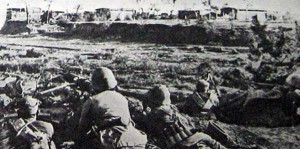 The left-wing of the KMT removed the CPC from the government in Wuhan, and later they were removed by Chiang. The KMT once again resumed the battle against the warlords and in June 1928, they captured Beijing. Later on, nearly all of the eastern part of China was controlled by Nanjing’s central government. The Nanjing government was seen internationally as China’s legitimate government. The KMT used Khampa troops to fight the CPC Red Army and the local warlords that would not fight the CPC in order to preserve their own forces.
The left-wing of the KMT removed the CPC from the government in Wuhan, and later they were removed by Chiang. The KMT once again resumed the battle against the warlords and in June 1928, they captured Beijing. Later on, nearly all of the eastern part of China was controlled by Nanjing’s central government. The Nanjing government was seen internationally as China’s legitimate government. The KMT used Khampa troops to fight the CPC Red Army and the local warlords that would not fight the CPC in order to preserve their own forces.
Second Sino-Japanese War 1937-1945
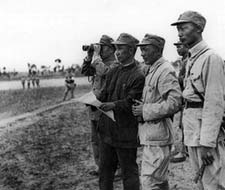 Chiang Kai-shek did not want to join forces with the CPC to fight the Japanese invasion because he believed the CPC was a greater threat. He wanted to unite China by removing the CPC and warlords forces first. Chiang thought that his forces were not strong enough and wanted more time to build up his military so he could launch an effective attack on the Japanese forces. So he ordered his KMT Generals Yang Hucheng and Zhang Xueliang to undertake the elimination of the CPC. His provincial forces sustained substantial casualties in their conflicts with the Red Army.
Chiang Kai-shek did not want to join forces with the CPC to fight the Japanese invasion because he believed the CPC was a greater threat. He wanted to unite China by removing the CPC and warlords forces first. Chiang thought that his forces were not strong enough and wanted more time to build up his military so he could launch an effective attack on the Japanese forces. So he ordered his KMT Generals Yang Hucheng and Zhang Xueliang to undertake the elimination of the CPC. His provincial forces sustained substantial casualties in their conflicts with the Red Army.
Overall, the CPC had won popular support because of their guerrilla war efforts in the Japanese-occupied regions. The KMT suffered greatly in their efforts to defend China from Japanese assaults. In 1944, the Japanese launched their final major offensive called Operation Ichi-Go, which was against the KMT and Chiang Kai-shek’s forces were seriously weakened. In the end, the CPC benefited politically from the Sino-Japanese War.
After the Sino-Japanese War 1946-1950
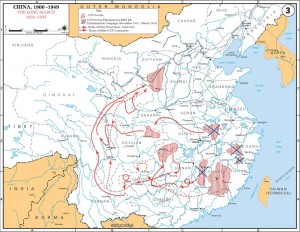 In March of 1946, the Soviet Union delayed leaving Manchuria because Stalin wanted to make sure the leader of the CPC, Mao Zedong, would have control over northern Manchuria. This led to more fighting for the control of this area. Chiang Kai-shek moved his KMT troops to recently liberated regions to stop CPC forces from receiving Japan’s surrender.
In March of 1946, the Soviet Union delayed leaving Manchuria because Stalin wanted to make sure the leader of the CPC, Mao Zedong, would have control over northern Manchuria. This led to more fighting for the control of this area. Chiang Kai-shek moved his KMT troops to recently liberated regions to stop CPC forces from receiving Japan’s surrender.
The CPC had more power when fighting resumed in the Chinese Civil War. Their main military force grew to over one million troops, and their militia had about two million soldiers. The CPC’s “Liberated Zone” consisted of nineteen base areas, which included one-quarter of mainland China’s territory (which had many important cities and towns) and nearly one-third of its population. In addition, the Soviet Union gave the CPC many captured Japanese weapons along with a large quantity of their own military supplies. The Soviet Union also gave them Northeastern China.
The End of the Chinese Civil War
The KMT’s defeat happened for many reasons and the main one was corruption, which had become a root problem in the party. Also, the CPC told the poor peasants they would be given their former warlord’s farmland and this made them very popular with the Chinese people at the end of the war.
No peace treaty or armistice was ever signed that officially ended the Chinese Civil War. Mao Zedong proclaimed on October 1, 1949, the capital for the PRC would be Beiping, later to be renamed Beijing. At this point, Chiang Kai-shek and around two million Nationalist Chinese left mainland China and went to Taiwan, which was still in Japan’s control at the time.
Today, there are tensions about Taiwan’s political status. The People’s Republic of China claims that Taiwan is part of their territory and still threatens the Republic of China with military action if the Republic of China declares its independence. The Republic of China also claims mainland China belongs to them.